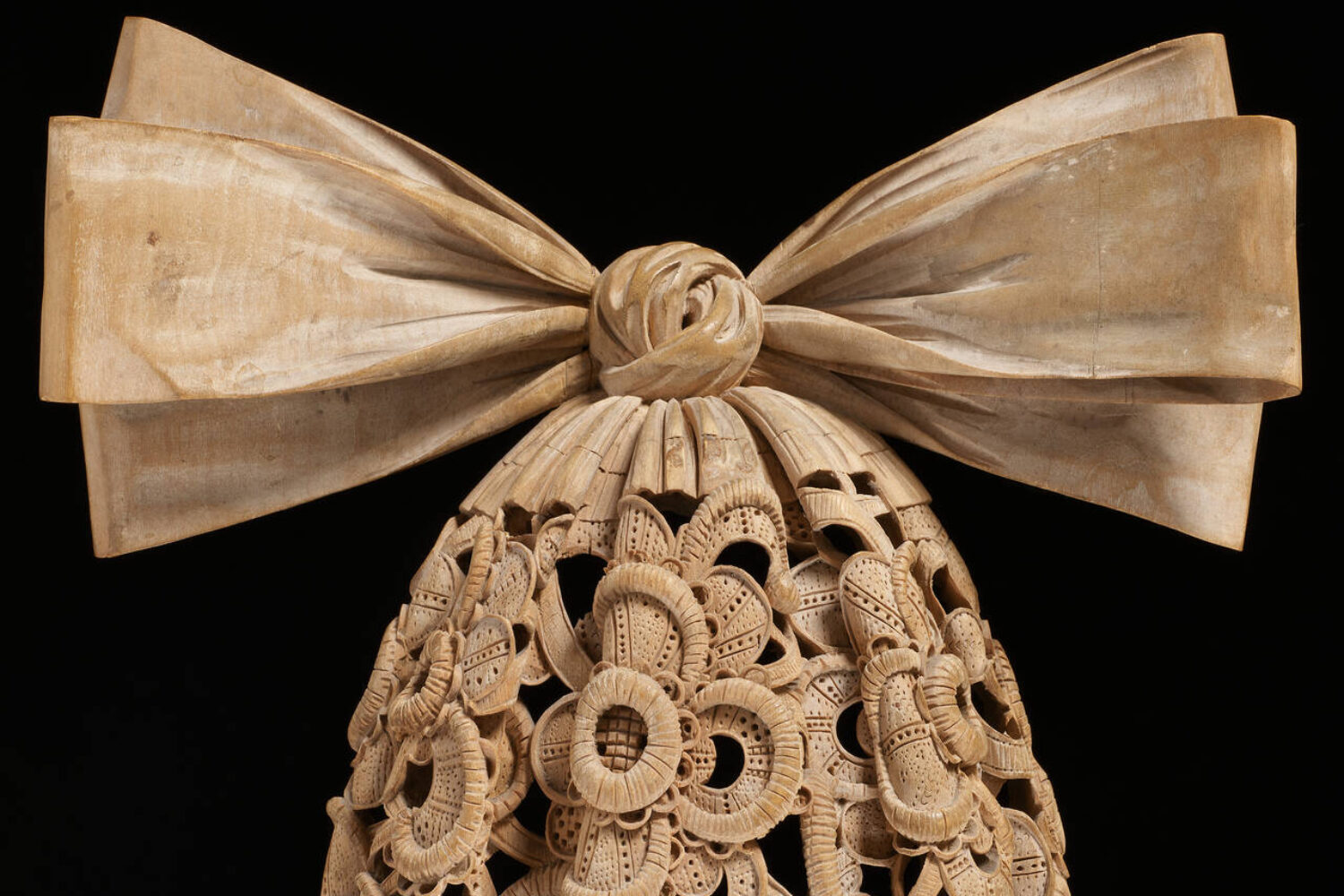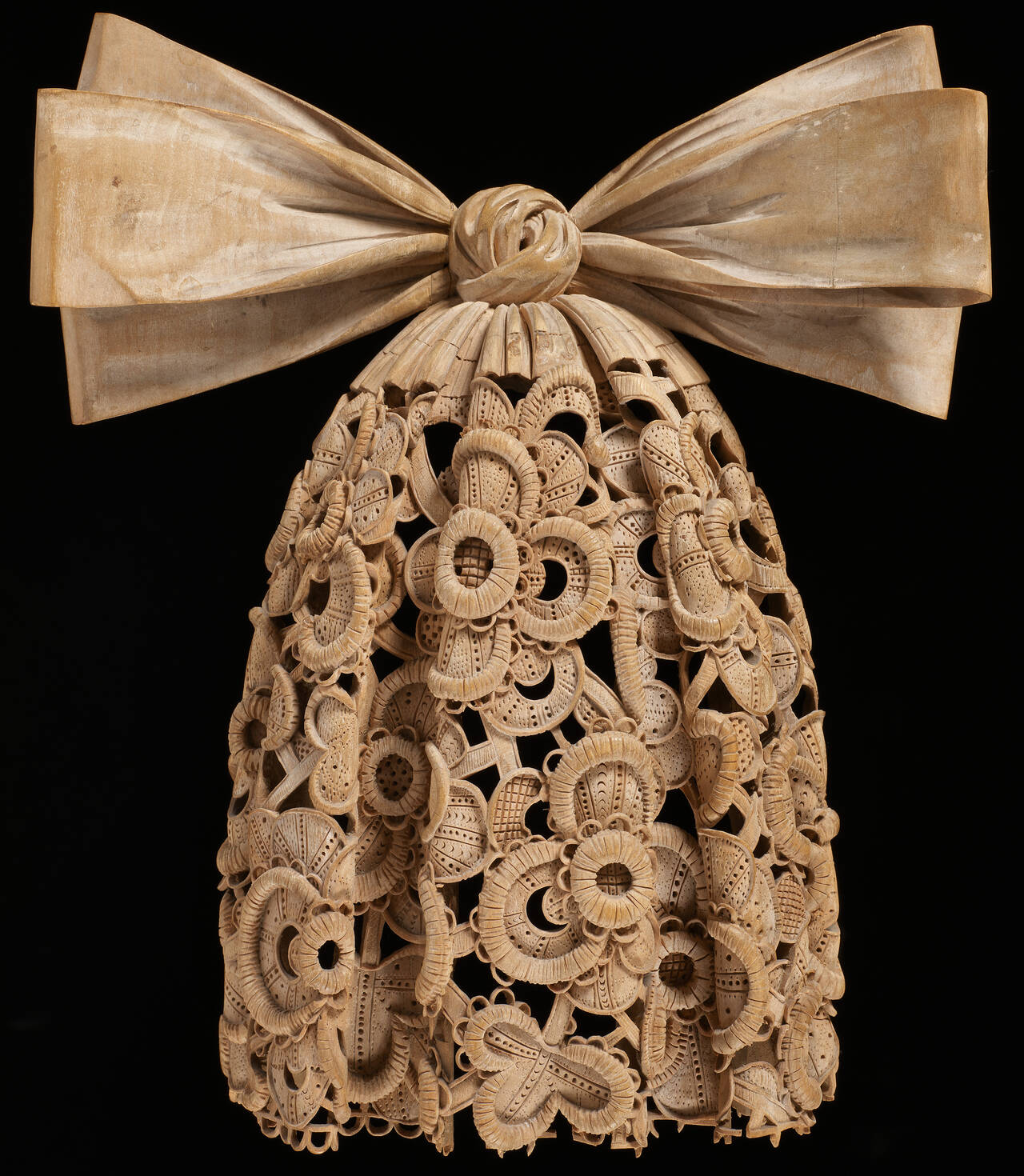3D Scanning for Cultural Heritage Preservation: Grinling Gibbons Cravat for the V&A
by
To celebrate the 150th anniversary of the death of Grinling Gibbons, the V&A museum asked us to 3D scan one of his most famous works in their collection, his limewood Cravat, made around 1690.
Using our in house workflow, designed for 3D scanning for cultural heritage preservation, we were able to create a digital version and a 3D print of Grinling Gibbon’a famous cravat.
Weighing just under 150g, the work is extremely delicate. Special requests to study it closely have to be assessed against the risks of handling, and the disadvantages of taking it off public display.
We were able to scan the Cravat on site at the V&A and capture high fidelity data using our non-contact, portable scanning equipment.
The anniversary fell in 2021, at the height of the Covid-19 pandemic, which added another layer to the risk assesment for the scanning process. The museum was closed to members of the public, and needed to pivot online. Using our portable 3D scanning set up, we were able to minimise the number of people who needed to be on site and maintain a safe social distance, reducing the risk of the virus spreading.
The V&A’s aim was to make the experience of holding the cravat more widely accessible to the public. By 3D scanning the piece, we were able to provide a digital replica that could be digitally ‘handled’ online. Using a 3D viewer, visitors to the website are able to zoom in on specific details of the cravat, and rotate it 360°, gaining a better visual understanding of it.
We then used the data from our scan to 3D print a replica of the cravat in nylon using SLS (selective laser sintering). The 3D printed version of the cravat can be much more easily handled and is a physical, archival record of the condition of the object at that point in time, a huge benefit of 3D scanning for cultural heritage preservation.

For museums and researchers around the world, structured-light 3D scanners make it possible to capture all the surface details of even the most priceless objects, without putting these artefacts and fossils at risk.
Maybe you need to create unerringly accurate, digital archival copies of prehistoric stone tools, a medieval castle wall, or the skull of an ancient human ancestor. Regardless, it’s vital that these objects are minimally handled, to avoid any damage. Museum curators around the world unanimously agree that structured-light 3D scanning fits this need better than anything else on the market today.
In addition to this, our 3D print was used as a reference for the wood carver Clunie Fretton, who was filmed replicating the cravat in her London studio.
This is a great example of how 3D scanning can be used in conjunction with traditional craft methods.
About Grinling Gibbons
Grinling Gibbons (1648 – 1721) is Britain’s most celebrated wood carver – his name synonymous with an evergreen style of decoration that transformed the interiors in many of the nation’s greatest palaces, churches and institutions. He was also a designer and ran a flourishing business supplying carvings and sculpture in stone, marble and bronze.
From the eminent artists and designers of all nations and ages, Gibbons was one of those chosen to adorn the Museum’s façade and interiors in the 19th century. His remarkable works, loved for their vitality, technical brilliance and virtuosity, continue to delight, influence and inspire.





 Grey Fox Web Design
Grey Fox Web Design